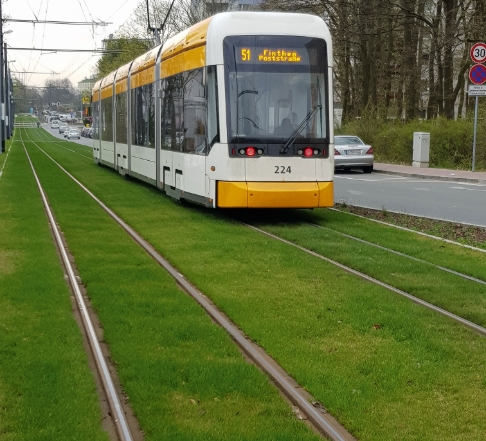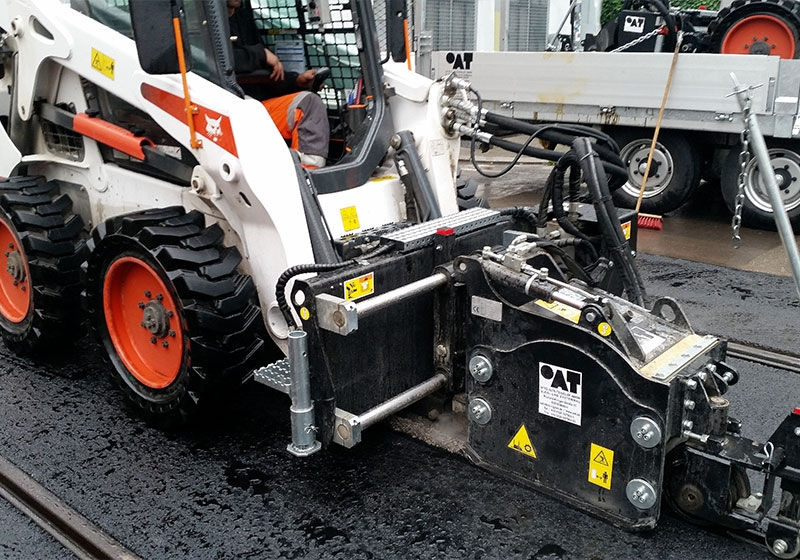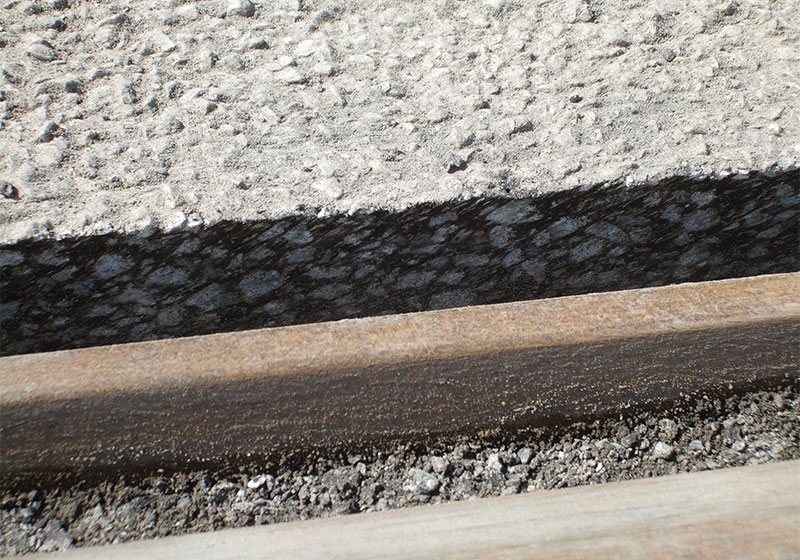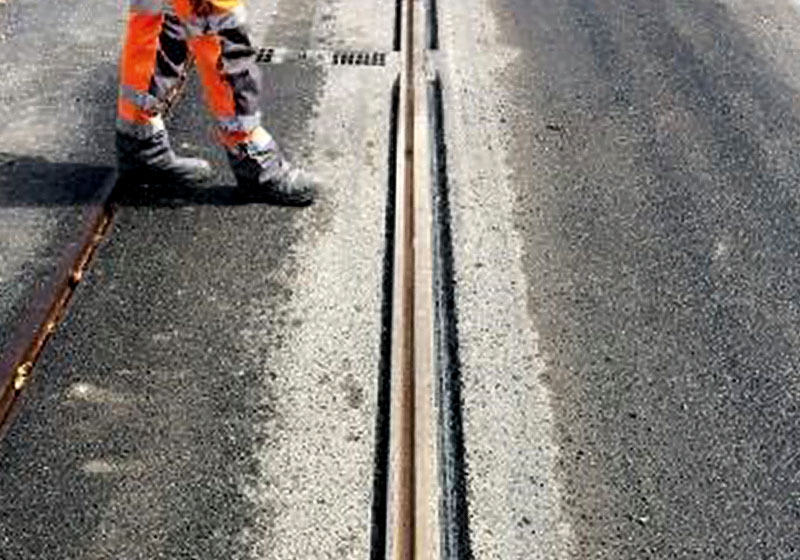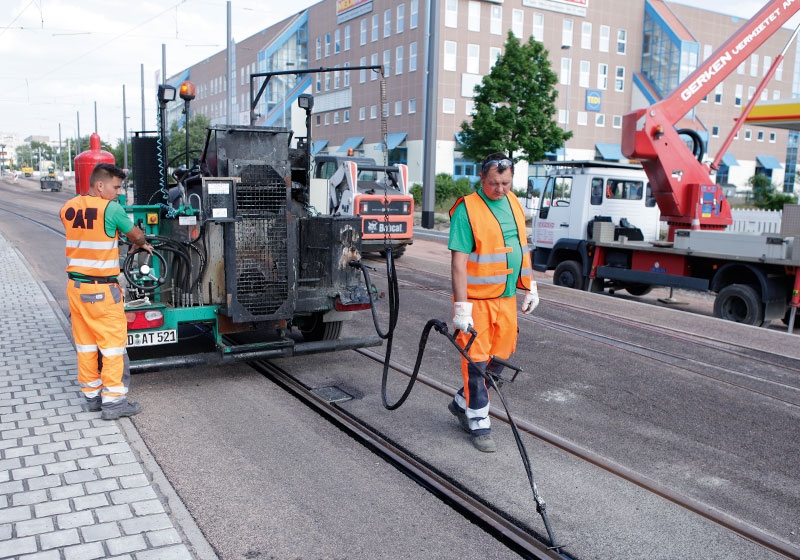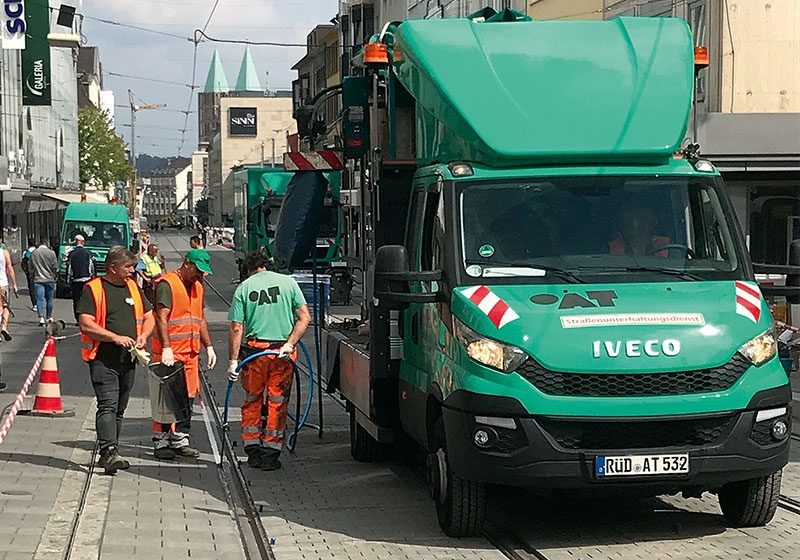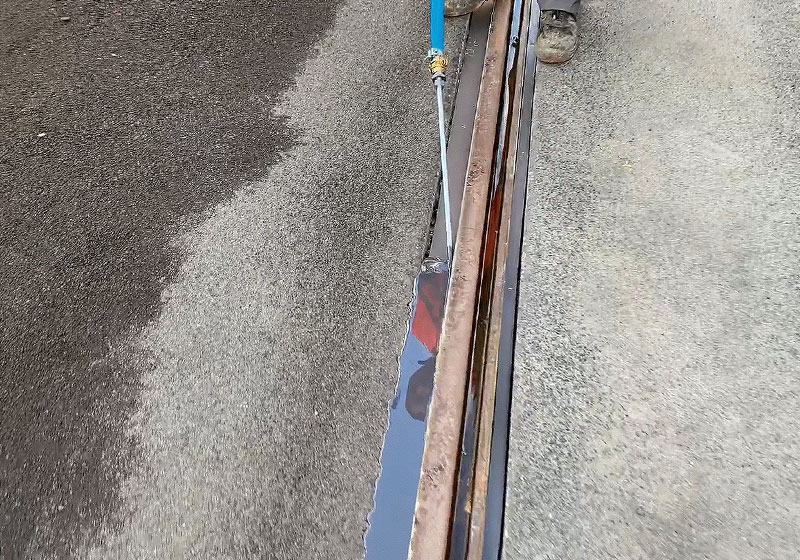In “closed tracks”, where the track area is an integral part of the road, the interaction between the railway and road surface must be coordinated. The ZTV Fug-StB stipulates and regulates the requirements for joint material and joint geometries. In addition to the production (e.g. milling) of the rail joints, OAT also offers filling with various materials. The casting with bituminous rail joint compounds is considered to be the standard. Cooperating with various partners, OAT has developed its own system solution with a cold-processable, environmentally friendly plastic joint compound and improved the bituminous materials.


